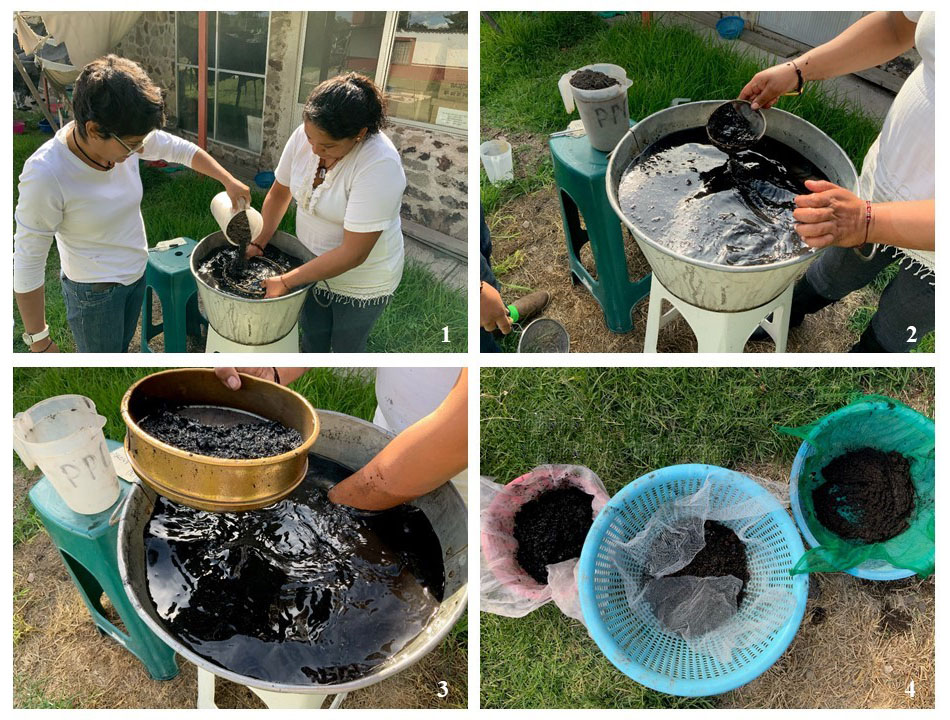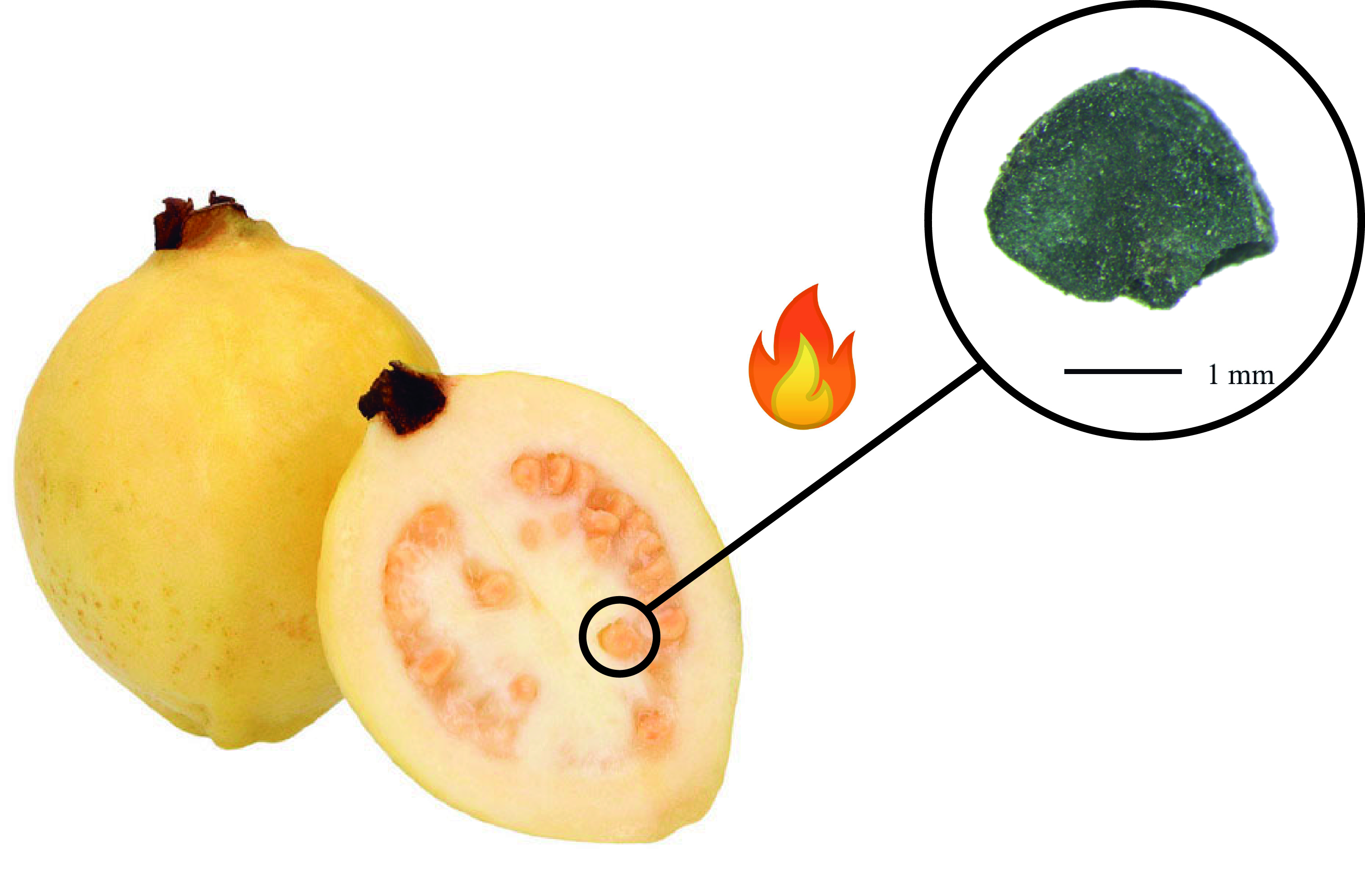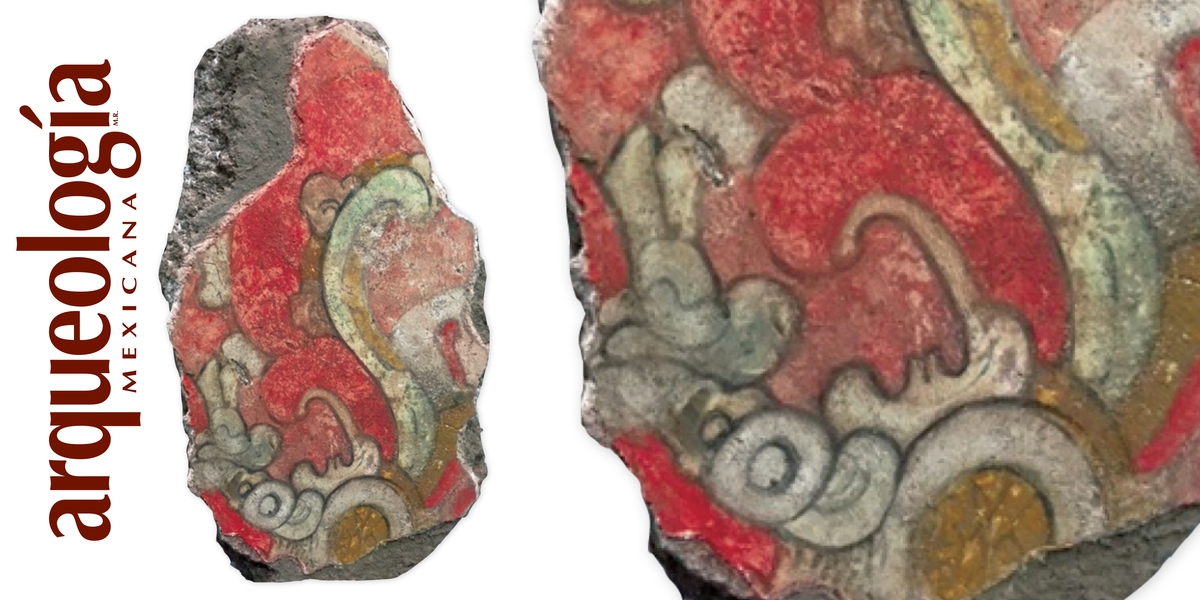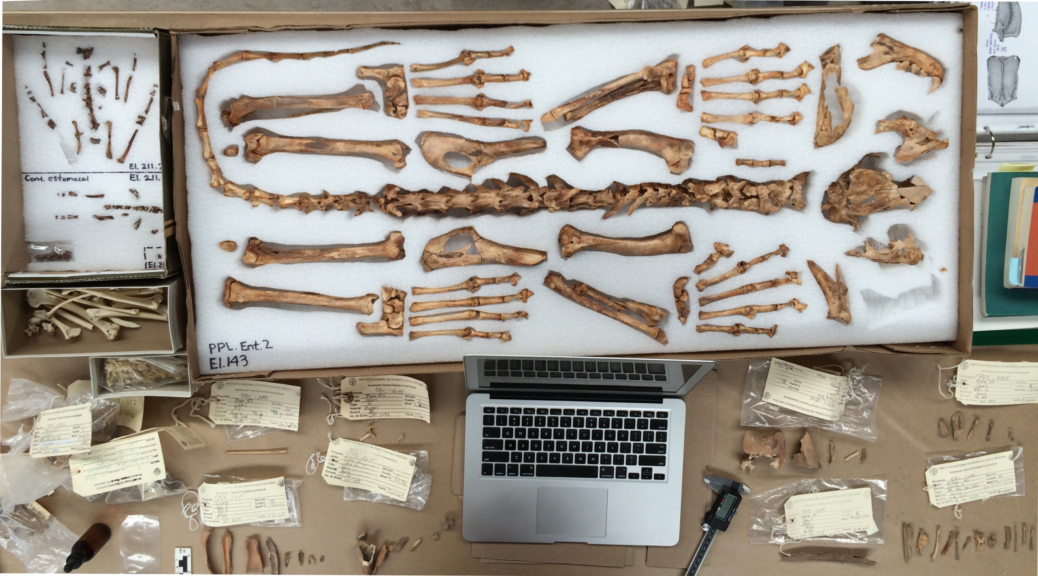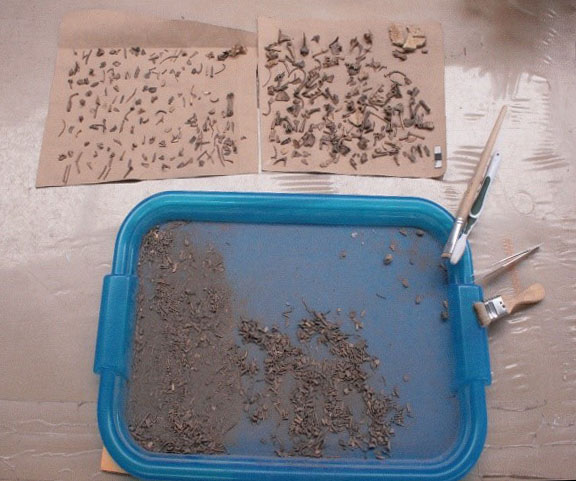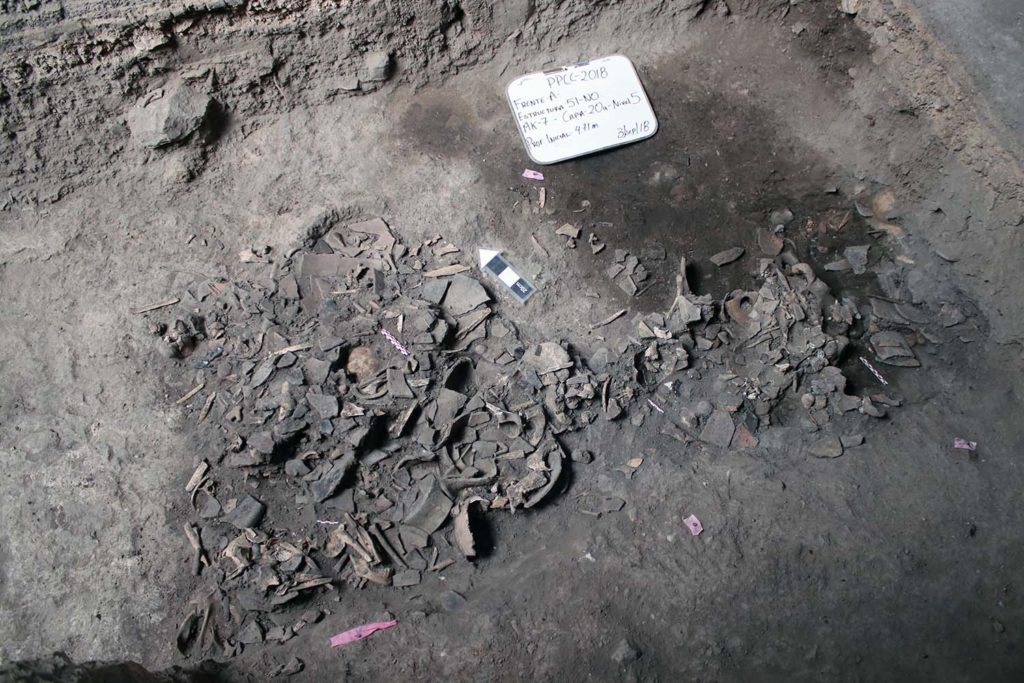What type of information can be recovered from a sherd?
Ollas, jars, pots, and vases are just some examples of the incredible variety of pottery forms abundantly recovered in Teotihuacan. These sherds carry an astounding amount of information that archaeologists can recover through patient re-piecing of the data. Below we discuss other applications beyond relative chronology that are utilized in ceramic analyses.
Evolution of typology: Changes in ceramic style across time among the recovered pottery assemblage illustrate what the trends at Teotihuacan were in each phase and the rate of these changes. Such evolution of pottery types can be recorded by design type, decoration method, or material type used to manufacture ceramics across time periods.
The following image shows some of the changes in pottery types at Teotihuacan. For example, take the simpler Tzacualli Phase sherd compared to the more elaborate Metepec Phase sherd. The Metepec sherd presents a more elaborate design with painted stucco.

Context information: The distribution, frequency, and type of ceramics from different locations can be used to reconstruct what activities took place at a specific site. For example, a high density of utilitarian wares such as vases, plates, and jars can be an indication of an ancient kitchen. On the other hand, a large concentration of defective and unfinished ceramic assemblages can indicate the workshops where ceramics were manufactured.
Burials also contain ceramic objects used in mortuary rituals. Funerary contexts commonly contain pieces with very sophisticated designs with very little use ware, including some censers, miniatures, and Tlaloc vessels.
Commerce: Some sherds were clearly imported from other regions outside the Teotihuacan Valley. Foreign goods are identified by tracing where the raw materials (clays, tempers, paints, etc.) come from and by their distinct decorative and manufacturing techniques. Such data on the quantity and location of these imported ceramics have provided information on foreign relations between ancient Teotihuacan and immigrant groups from throughout Mesoamerica, as well as enclave settlements.
For example, archaeologists have identified large quantities of “Thin Orange” ware and granular ware that indicate foreign immigrants lived in Teotihuacan. These and many other imported ceramics from the Gulf of Mexico, West Mexico, Oaxaca, and the Maya region, among others, which indicate Teotihuacan was a metropolitan city composed of immigrants from disparate regions across Mesoamerica.
Literature consulted
Rattray, E. C. 2000a. Teotihuacan: Ceramics, Chronology, and Cultural Trends. University of Pittsburgh Memoirs in Latin American Archaeology, No. 13.
Rattray, E. C. 2000b. Teotihuacan: Ceramics, Chronology, and Cultural Trends–Color Illustrations. Latin American Archaeology Database, University of Pittsburgh. <URL: http://www.pitt.edu/~laad/rattray/>
Rattray, E. C. 2001. Teotihuacan: Ceramics, Chronology, and Cultural Trends. Serie Arqueología de Mexico, Instituto Nacional de Antropología e Historia / University of Pittsburgh. Mexico, D. F., pp. 617 + tables of frequencies of ceramic wares.
